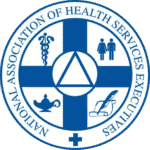When the COVID-19 pandemic hit our shores, some experts wondered if there would be waves of virus spikes, similar to what we’ve seen in other pandemics. It’s unfortunate, but the pattern has held, and the winter months during the pandemic look to be particularly difficult in the United States. How will the second wave of COVID-19 infections impact our nation’s rural health centers?
What’s Next for Community Health
In August, the New England Journal of Medicine sounded the alarm for community health centers. They pointed out that this vital community of healthcare teams served the most vulnerable rural and low-income people in the U.S. “CHCs are financially vulnerable. They depend on federal subsidies for nearly 20% of their revenue…but this support has been tenuous.” They also pointed out that more than 40% of these organizations had negative operating margins in 2018.
Yet these community facilities are critical to our COVID response. More than 90% provide coronavirus testing. We know that people of color and poor people have been hit hard by the virus, so these facilities, that primarily serve these communities, have a test positive ratio more than double the national average. These community facilities were hit hard by the pandemic’s first wave. The Kaiser Family Foundation reported more than 15% of U.S. community health centers had temporarily closed by May 2020.
The Daily Yonder calls the second wave of COVID-19, “the rural wave,” as the virus spread outward to even the most isolated communities in the country. They report this winter is, “the phase of the pandemic that is swamping rural America with record numbers of COVID-19 infections.” By October, the current rate of new infections in rural America was 65% higher than in urban counties.
The effect on rural hospitals has been devastating. The North Carolina Health News calls it a slow-motion crisis, noting that “Though all of North Carolina’s rural hospitals managed the financial uncertainties of early spring without closing their doors, future closures aren’t out of the question.” Yet the resilience and innovation to provide care under challenging circumstances can’t be discounted. With a new administration entering the White House and Congress in January, several things could happen. For example, CMS could forgive the advance payments they made to hospitals during the first wave. Or, states could disperse more CARES Act funding to community facilities. While these efforts won’t shore up the fundamental financial challenges of these facilities, it would help them cope with the second wave of COVID infections barreling down on these organizations this winter.
Hope is also on the horizon in the form of new vaccines just being distributed around the U.S. as of December 2020. WYSO quoted an Indiana Hospital Association executive as saying, “You’re going to see…rural hospitals out there on the front line side by side with the local health department of the State Department of Health, helping to execute a plan for vaccine distribution.” This quote illustrates both the critical nature of the care community facilities provide and the resilience of staff poised to continue to fight against the second wave of COVID-19 this winter.
UHC Solutions salutes our frontline healthcare workers. We offer healthcare staffing resources to help community hospitals staff up to provide care to rural communities. Talk with our team today to find out what resources we have available to combat the second wave.





